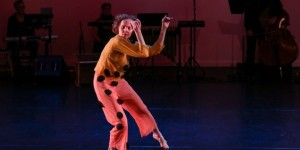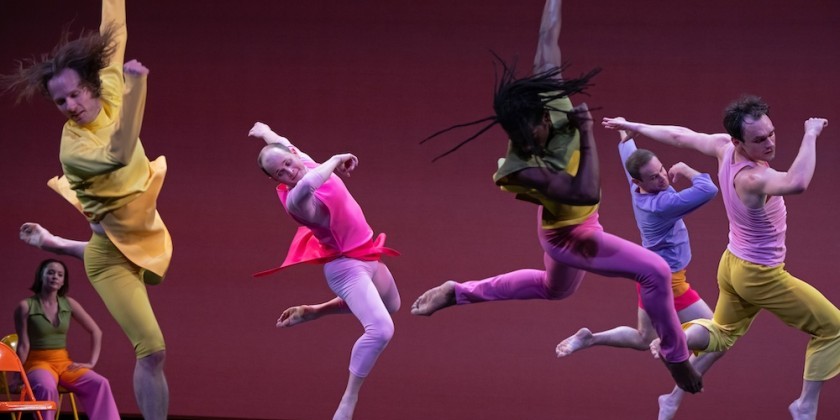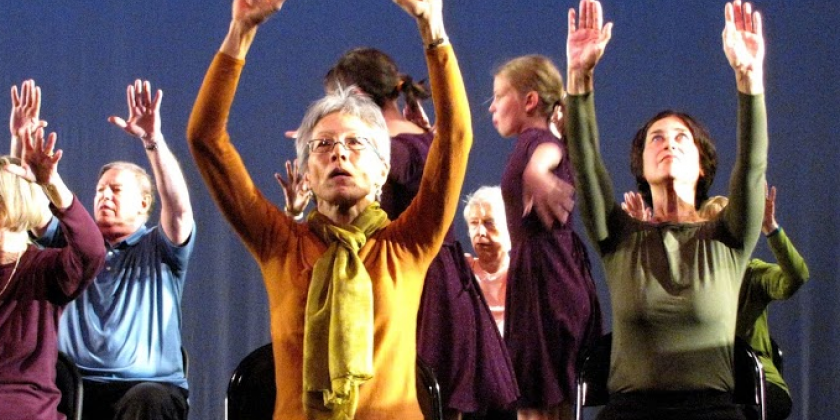THE DANCE ENTHUSIAST ASKS: Mark Morris and Breakthru's Melissa Painter Bring Movement to the Workplace
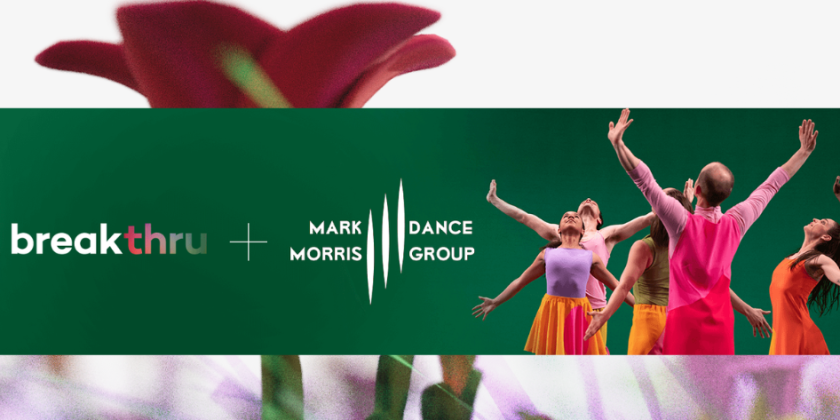
Anybody & Everybody Can Perform the Legendary Mark Morris' Choreography on Their Coffee Breaks
Readers of The Dance Enthusiast likely don’t need to be told twice that our brains and bodies are intimately connected, or that movement makes us happier and more productive! Yet, it’s still easy to get sucked into the trappings of a sedentary lifestyle. The necessity of spending eight hours a day at a desk is a reality for many.
Gratefully, there’s a tool for overcoming sedentary mental fatigue thanks to Breakthru, a platform that offers two-minute guided-movement “micro breaks” to refresh body and mind.
A recent collaboration with renowned modern dance choreographer Mark Morris, enables Breakthru users to move through motifs from Morris’ iconic works as part of their workday. Theo Boguszewski of The Dance Enthusiast spoke with Morris and Breakthru's founder, Melissa Painter, about their collaboration, and how it supports wellness in the workspace while embodying Morris’ belief that “dance is for anybody.”
Theo Boguszewski, for The Dance Enthusiast: Mark, it’s so great to meet you. I’ve been a big fan for a long time. I grew up in Berkeley and we used to go see The Hard Nut when I was in elementary school.

Mark Morris in rehearsal. Photo courtesy of Mark Morris Dance Group
Mark Morris, Mark Morris Dance Group: That's good to hear. Because I've been around for a long time.
Melissa Painter, Breakthru: I grew up in Mill Valley and I also saw Mark when I was younger.
My first question is for Melissa. Can you share a little bit about the history and evolution of Breakthru? I know it's a massive enterprise; today you’re across 70 something countries, millions of monthly users. Where did you get the idea and how did it evolve?
Painter: My team and I have been focusing for a long time on the intersection between our bodies, technology, and the thinking part of our day. What are we doing at work and at school? We've been doing a lot of research about the fact that, in general, people's relationship with their technology is getting them to sit still too much, which has massive health consequences, massive cognitive consequences, et cetera.
Also, people have gotten really bad at taking breaks, because in general, instead of taking a walk with a colleague or grabbing a cup of coffee, what people are doing is diving into their social media feed, which is not a break at all.
So that's what we were working on, but we were working on it in spatial computing. So full bodied, augmented and virtual reality body sensing. And that's not because I'm a technology fan. It's because those spatial forms of computing actually let you use your whole body, and interact with technology. And so that's where Breakthru was born. And we've worked since the beginning with a lot of expert movers, dancers, athletes, thinking about how to get non-expert movers to pivot for us. How we ended up with such a large audience was actually during COVID; Microsoft came to us and said, “the world's getting stuck inside a rectangle, can you make something that might be useful to people where they're stuck”? They seed funded us to do it, and we launched. And the uptake has been amazing, which is gratifying, but also very sad because we wouldn't be so successful if people weren't so desperate to move more.
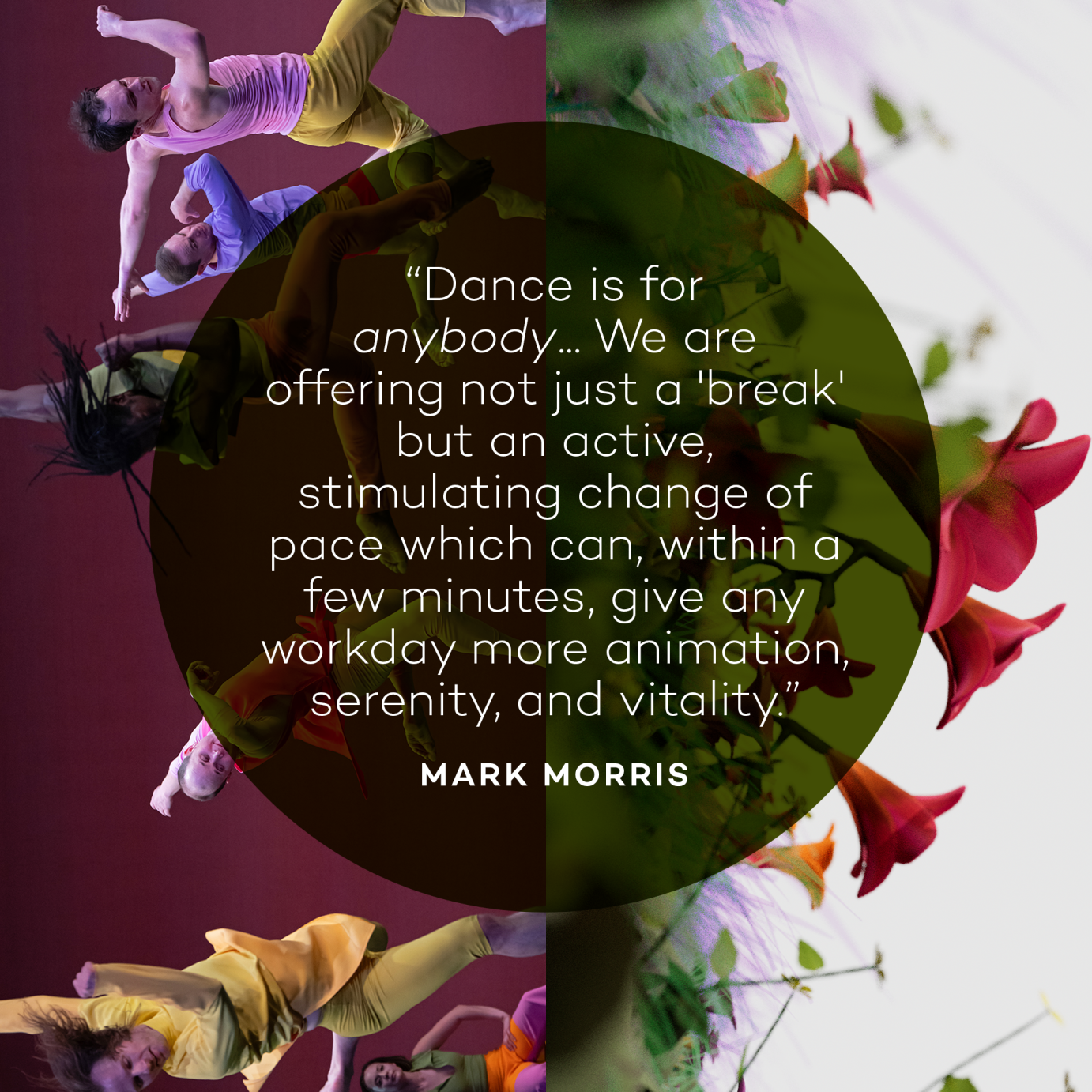
Morris: It predates the phone. It started centuries ago with the chair. It's evil and there's no way around it. And everyone has bulging discs and lordosis because of bending your spine the wrong direction hour after year after lifetime. Then the advent of the horrible solutions of standing desk, and sitting on a stupid inflatable ball and then immediately everybody shuts down into a phone and it's tragic. But it starts with the collapsed lumbar spine just from sitting with no muscles.
Painter: Yeah. And I mean, if you combine that with the fact that we built up this myth of “sit still to think hard,” which is actually a complete myth. Right? Any five-year-old can tell you that.
Morris: But also, it's a gender specific trend which is “little boys can't sit still as well as little girls”. And now that's called ADHD. I mean, I'm not saying there's no such thing as ADHD, but it's like “you must be on the spectrum because you're bored and you'd rather run around,” you know? And then the girl part is, you've been forced to have an invisible tea party with some very bossy four-year-old. All kids should have more feral time.
Painter: Yes, we've been talking about feral time and free range. Free range children. But, that is actually where these problems start. Right?
The reason why I wanted to write about this is because I danced for many years and maybe about ten years ago I made the transition to working in office. Now I spend my whole day sitting. And so I thought, “wow, this is super applicable.”
Painter: I get emails and calls from users around the world; the number of people who say that they had let go of movement in their life and now they're coming back to it because they realize a small tool like this can help.
Can you both share a little bit about how you met and how you started this relationship?
Morris : I met Melissa at a bar.
Painter: That's true. But there's a backstory.
Morris: Oh, yeah. I don't know beyond that. I don't leave much of a memory wake as I sail through my days. I don't keep track of a lot of the things that I threw overboard. So you start, and I'll agree with everything, because you know the story way better than I do.
Painter: So there’s a beautiful serendipity to this, because sometimes things are meant to be: One day we're looking at the data of who comes on to Breakthru, and lo and behold, Mark Morris Dance Group. And my heart just leapt because I've been a fan since the very beginning. And at literally the same moment, someone on Mark's team reached out to me on LinkedIn and said, “hey, we found this thing, what is it?” And so we started conversations.
My goal has always been to collaborate with expert movers from different fields; martial arts, yoga, dance. And Mark was so clearly exactly what we were looking for. So that was the beginning. And we started a conversation, and then we did, in fact, meet in a bar.
Morris: In Seattle.
Painter: Yeah. And I got to see “Look of Love” twice, which made me cry both performances.
Mark, what was the process of kind of transcribing your choreography to this two minute sort of micro break?
Morris: Oh, I had nothing to do with it. I am the stereotype of a baby boomer who can't remember a password and needs large print. If I can't get into something, I quit. I'll ask somebody else, ask an eleven-year-old. So the magic of how this was done, the technical whiz bang magic, hooray, it exists because I can watch the thing that we're watching and dance along if I want.
What is the uncanny valley?
Painter: So when you attempt to reproduce a human with media, often there's a mismatch. It's happening a lot with a lot of the AI generated art right now, and it’s horrifying. It’s called an uncanny valley because it can be the smallest thing about something that suddenly makes it feel not human, and then you feel disassociated from it.
Morris: I just can never remember it but it's my favorite term, “the uncanny valley.” It's like the movie I saw that made me want to never see another movie and abandon art forever was Avatar. It was more than realistic. I found it so dead and so upsetting. And that's why the fear of chatbot and that kind of stuff, it's like, wait a minute, it's a better poet than I am, et cetera. It freaks me out.

Transition from Mark Morris' Look of Love to a Breakthru Movement Break; Photos: Courtesy of Breakthru and MMDG
Painter: We went through a process with Mark's team, thinking about the gorgeous movement vocabulary in a lot of these pieces and what would be accessible to non-expert movers. We were thinking about the kind of movement that you see in Mark's pieces, where you walk out of the performance wanting to do it in your own body because you've been with the joy of it. So that was how those moments got selected. But then they also got invented in real time on the stage with the dancers, because improvisation is the core of Mark’s movement, it’s such a part of that team and how they work together.
And then, on the motion capture front, what I love about it and why we use it, is the fact that human movement conveys so much meaning that we can recognize it even out of these tiny points of data. And there's a huge amount of science behind that. Like babies’ brains are really attuned to recognizing motion capture data. If you feel the breath of the mover, you know there's a human in there.

Can you share a little bit about the role of sensory engagement through the soundscapes and the visuals, and how that plays into the micro breaks?
Painter: Mark and I work with similar palettes in our own arenas. And, in fact, what we did was very driven from a color standpoint, by what Mark's original inception was with his team. And as it relates to the sound, there's actually a health benefit to some nature. Immersion, bird calls. We have real wolves in some of our breaks, putting people in a forest, et cetera. Also, I can't afford my own orchestra. If I could, perhaps we would do what Mark does, which is work with live musicians.
Morris: Neither can I these days. But I just want to say something about that. The super high pressure of absolute rhythmic and physical accuracy in the seconds worth of TikTok dance time, which I think is great, it's fun for people who do it. And everybody's in a wedge like a K- Pop band, so you fit on the screen, which is brilliant. But it’s the incredible specificity and competitiveness, the pressure to get it absolutely right. When I first saw the Breakthru stuff, I didn’t understand the non-rhythmicity. But I like it because you'll find the rhythm in doing it. And you're not counting, you're not reducing time to numbers. It's time that goes through itself.
Quinn Kennedy Breakthru Engineer Testing Mark Morris Dance Break
Painter: So I think the point that Mark is making is super important because part of what led into Breakthru is research we've done about why people stop moving, or why do they think movement is for others and not for them. Part of it is being confined. This is your job. Sit still and think hard. But a lot of people give up on their body and give up on moving when they're pretty young. And it may be the moment they don't make a sports team. It could be the moment that they give up professional dancing. It could be that they got injured. I mean, these things happen in peoples’ lives. But one of the things that leaves a lot of people out is feeling like they're not good enough. And so when you remove something like the rhythm, like what Mark is saying, your movement becomes an instrument. Your movement is changing the sound each time you play. Each time you repeat and move, it's always going to be different because your body is different, the moment is different. We have to try to explain that feeling to people who aren't as good at listening to their bodies.
How is this partnership exemplary of dance's evolving role in non traditional spaces like the workplace?
Morris: Well, the thing is that dancing has always been a social activity. And my wacky theory — this is a big generalization — is that people dancing in colder climates jump more and hold hands more and partner more, and in tropical climates, it's low to the ground. And it's not presentational. It's for everybody. I sound like a bumper sticker, but I've seen that to be pretty much true. The point is, as soon as you're observed, you're performing. That's what I don't like. My company very rarely uses mirrors. I don't want people dancing at me. I want them to do it, and I observe it.
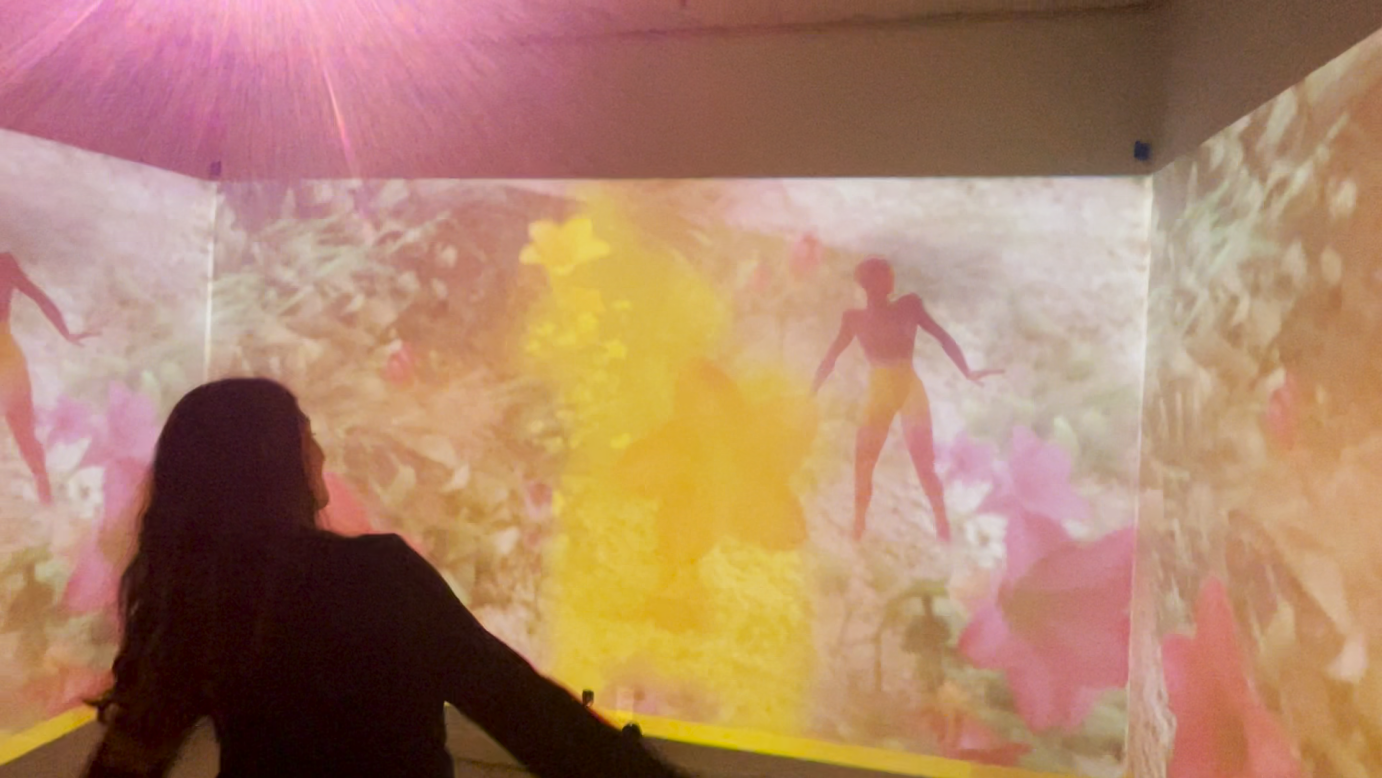
Painter: Mark, you made a point yesterday which really resonates for me, which is that we forget dance was a huge part of courtship, of community building, placemaking, of belonging. And then all of a sudden, not that many years ago, we stopped doing it that way. And we have all of these resulting catastrophes. We have a healthcare crisis because of sedentary behavior. We have enormous loneliness issues, we have not as much multigenerational interconnectedness. And I would argue taking dance away from these shared environments is a big component of that. I mean, it's pretty commonsensical, right? You get a dating app over tapping someone on the shoulder saying, hey, would you like to dance? I mean, what, no wonder no one can figure out how to fall in love.
BreakThru is at Kaiser, and it’s for nurses in between shifts. And we're also live at the National Health Service, so the entire healthcare system in the UK. 20% of Breakthru usage is in schools, and it’s free forever to schools, preschools through universities. It belongs in places where people are working hard, but it also belongs in places where kids are trying to learn their own emotions and their own bodies and creative movement.
Melissa, what are some challenges that you've had, if any, with working with big corporations?
Painter: I mean, there’ve been moments of heartbreak where, yes, I hit a brick wall. But what I love is the challenge of learning how to speak to people who come at an idea like this with utter reluctance. In general, many people who are in technology really believe their body is for walking their brain around. So when you're looking at that room and you're saying, “actually, movement makes energy! Sitting still makes you more cognitively tired.” And you give them this whole list of stuff, they're still going to look at you cross eyed. But then if you say to them, “have you ever had a good idea while you're walking?” There's not a person in the room who's going to say no, because certain things just are lived human experience.
I think the combination of that and the fact that so many leaders, for the first time ever during COVID, were physically forced to live the life of all of their workers, which is that they had to sit still at a computer versus being on a jet, or in a conference, or walking between meetings. And suddenly they were like, “my neck hurts, my back hurts. I feel like crap at the end of the day.” What's very sad is when workers are begging for something and leadership won't acknowledge the necessity. But at that point, it's our job to just prove it.
And part of what's shifting is that now there’s reams of neurological science. Again, you could just look common sense in the eye; when you move in sync with others, you're implying to each other, “I'm willing to cooperate.” These things are what's happening in your physiology. And it's fun to go into an audience that is not prepared to hear something like that. Show them a tool that makes it work. Show them the science that backs it up. I’m trying to build a bridge between everything Mark's been doing forever and these poor people stuck in these desk jobs. It's a movement, and we're not going to give up.





